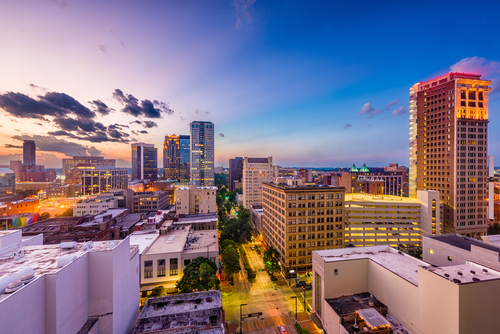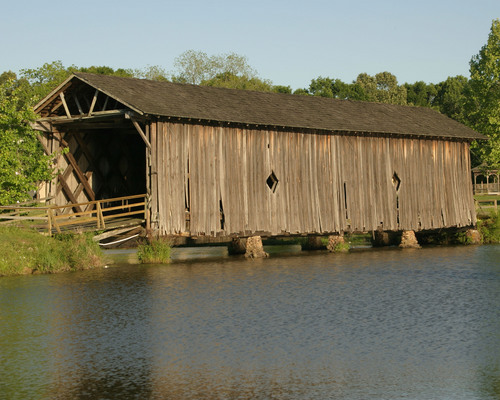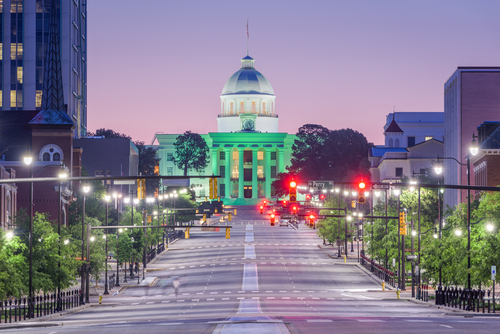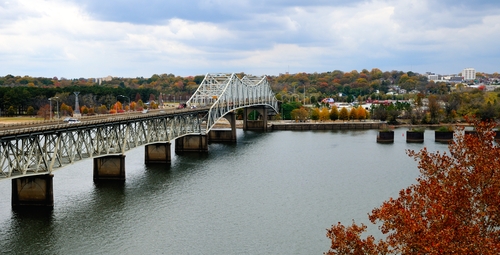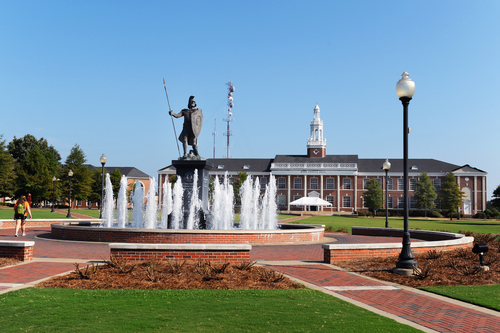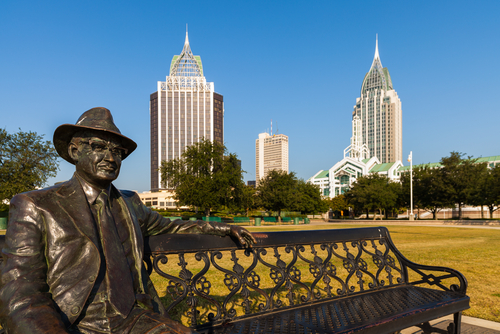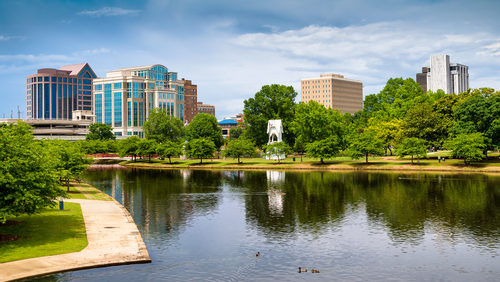
Methodology
Our editors used Wikipedia to make a list of every college town in Alabama, then used Sperling’s Best Places to rank them on general affordability. To figure out which college towns are most affordable, we looked at costs for:
- housing
- food
- healthcare
- transportation
- utilities
We compared them to the national average. We also considered features like:
- amenities
- crime rates
- public transportation
- overall quality of life
Then we narrowed our list down to the 10 most affordable college towns in Alabama.
Tuskegee
Tuskegee University
Cost of Living: 23.7% lower than the national average; 12.3% lower than the state average
Tuskegee is a small town that might seem a little isolated upon first glance. But look closer and you’ll find a vibrant community where students can thrive during and after their college experience. The cost of living in Tuskegee averages 24% lower than the national average. It’s especially affordable in the areas of:
- housing
- transportation
- entertainment
Even in the town’s safest places near the university campus, students can find a one-bedroom apartment for an average $475 per month.
Birmingham
University of Alabama at Birmingham, Birmingham-Southern College, Samford University, Birmingham School of Law, Cumberland School of Law, Miles Law School
Cost of Living: 20.9% lower than the national average; 9.5% lower than the state average
It was once known as the “Pittsburgh of the South” thanks to its history as a major manufacturing center for steel. Birmingham underwent a gritty mid-century decline marred by Civil Rights issues and economic troubles. Today, Birmingham is experiencing a major economic turnaround thanks in part to the energy that comes with being home to a number of colleges and universities. Living here costs 21% less than the national norm. This is great news for the city’s sizable student population. The lowest costs come in the categories of:
- food
- healthcare
- transportation
- entertainment
- housing
Housing in Birmingham averages only about 34% of the national average. Students can rent a studio or one-bedroom apartment for approximately $702 and $765 per month, respectively.
Livingston
University of West Alabama
Cost of Living: 20.2% lower than the national average; 8.8% lower than the state average
Home to University of West Alabama, Livingston is a mostly rural town in Sumter County. Living in Livingston costs about 20% less than the national average. It’s nearly 9% less than the Alabama average. The biggest differences affecting this lowered cost of living is healthcare, which averages nearly half of the national norm. Indeed, it’s possible to rent a one-bedroom apartment in Livingston for about $560 per month, nearly $100 less than the rest of Alabama.
Montgomery
Auburn University at Montgomery, Alabama State University, Faulkner University, Huntingdon College
Cost of Living: 19.9% lower than the national average; 8.5% lower than the state average
Montgomery may be Alabama’s capital city, but it’s certainly not a big, bustling, overwhelming place. Montgomery exudes Southern charm, and has a long history of significance in the region. Today, it’s home to a number of universities and a rapidly strengthening economy. However, it’s still a place where students can rent a one-bedroom apartment for less than $750 per month. Housing is the area in which students are likely to save the most money. But average costs for entertainment, transportation, and food also fall well below the national averages.
Florence
University of North Alabama, Heritage Christian University
Cost of Living: 15.9% lower than the national average; 4.5% lower than the state average
Florence is an economically stable small city located in the Tennessee Valley, not far from the Tennessee border. Manufacturing has kept Florence relevant, and the biggest local industries are:
- aluminum
- rubber
- steel
The cost of living in Florence is below the national average in every category, though housing is the best deal for the local student population. Housing costs on average a mere 61% of the national average, with one bedrooms renting for an average of $583 per month.
Jacksonville
Jacksonville State University
Cost of Living: 15.2% lower than the national average; 3.8% lower than the state average
Jacksonville, Alabama is a small town making up part of the Anniston-Oxford-Jacksonville metropolitan area. The region has some charm and is conveniently located near the recreation-rich Talladega Mountain. However, students attending school in Jacksonville aren’t likely to find a whole lot to do outside of campus. Still, the cost of living is quite inviting. For those who need the occasional big night out, Birmingham is located within easy driving distance. A one-bedroom apartment in Jacksonville rents for an average of $480 per month, below the average for the region, the state, and the country. Also costing less than the national average are:
- food
- transportation
- entertainment
Troy
Troy University
Cost of Living: 13.4% lower than the national average; 2% lower than the state average
There’s not much to mention about the small town of Troy, Alabama simply because there’s not much there. Troy locals’ opinions about their community vary dramatically, with some comparing it to a Norman Rockwell painting and others using words like “backwards.” What both groups seem to agree on, however, is that there isn’t much to see or do in Troy besides what revolves around the university. Both groups also mention the decent cost of living. Average costs in Troy are lower than the national average in every major category. A one-bedroom can be rented for about $540 per month, nearly $100 less than the Alabama average.
Dothan
Fortis College-Dothan, Troy University at Dothan, Wallace Community College
Cost of Living: 13.1% lower than the national average; 1.7% lower than the state average
Little Dothan, Alabama is home to:
- a leading community college
- two major satellite campuses
- a school of osteopathic medicine
With so many students around, it’s a good thing Dothan’s cost of living is one of the lowest of any Alabama college town. Costs are all less than the national average in the areas of:
- food
- housing
- utilities
- transportation
- entertainment
Speaking of entertainment, Dothan offers plenty of it. BBQ is the official food of Dothan. The town hosts two professional barbecue competitions here per year. Dothan is also home to:
- the annual National Peanut Festival in November
- the Toadlick Music Festival, a three-day event celebrating all things country and southern rock.
Mobile
University of South Alabama, Spring Hill College, University of Mobile
Cost of Living: 12.4% lower than the national average; 1% lower than the state average
Mobile, Alabama has a long and unique history as a shipbuilding center and port city. Its local culture retains much of the Spanish and French influence that contributed to its development. It’s often compared to New Orleans (though with fewer problems). The local aerospace, automotive, and paper industries are booming and have ensured that Mobile has a growing economy. This means good things for local students, who can rent a one-bedroom apartment for approximately $681. This is about $220 less than the national average. Also falling below the national average are costs for:
- utilities
- entertainment
- food.
Huntsville
University of Alabama in Huntsville, Alabama A&M University, Oakwood University, Huntsville Bible College
Cost of Living: 7.8% lower than the national average; 3.6% higher than the state average
Huntsville, Alabama is a charming southern town known for its:
- good neighborhoods
- surrounding Appalachian foothills
- strong local technology industry
It has earned it the nickname “Space Capital of America.” Companies with major operations in Huntsville include:
- Boeing
- Lockheed Martin
- LG Electronics
- Intergraph
- DirecTV
This means there is a solid supply of good, well-paying jobs. A one-bedroom costs an average of $764 per month, higher than the Alabama norm. However, food, utilities, and transportation costs all average well below the national averages.
Tuscaloosa
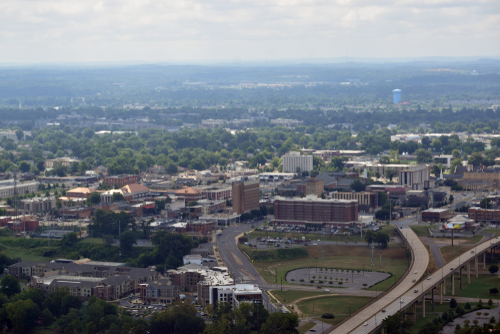
Cost of Living: 7.7% lower than the national average; 3.7% higher than the state average
The 10th most affordable college town in Alabama is Tuscaloosa, home to University of Alabama. Living in this large city costs nearly 4% more than living in most other places in the state, though still less than the national norm. The biggest difference in cost of living is housing, which averages only about 74% of the national average. Average costs for food and transportation fall just below the national norm, while the average cost for transportation is right on par.
And which are the Alabama college towns with the highest cost of living? Those would be Auburn (8.6% higher than the national average) and Homewood (22.2% higher than the national average).
GCD Staff
September 2019
Related:
- 50 Best Deals on Competitive Small Colleges
- Top 50 Great Deals on Bachelor’s Degrees Online
- Top 20 Deals on Small Colleges in Texas
- Top 50 Best Colleges in Texas
- 20 Best Deals on Colleges that Don’t Require SAT
- 20 Highest Paying Bachelor Degrees

